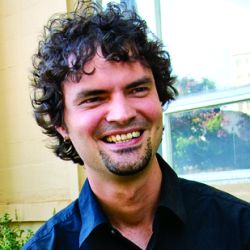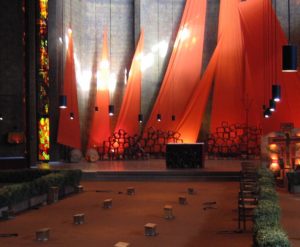At the beginning of the twentieth century, the Christian Church in the West was boundlessly optimistic and confident about the conversion of the world to Christianity. On the other hand, the Church faced tremendous challenges and crisis in its missionary lands.1 According to historian Andrew Walls, the Edinburgh Missionary Conference of 1910 was:
a landmark in the history of mission; the starting point of the modern theology of mission; the high point of the modern Western missionary movement and the high point from which it declined; the launch-pad of the modern ecumenical movement; the point at which Christians first began to glimpse something of what a world church would be like.2
Among the eight commissions formed at the conference, two of them——Commission I and Commission IV——had “non-Christian” in the titles. But it is Commission IV that dealt most specifically with the problem of studying the presentation of the Christian message to the minds of non-Christian peoples.3 Though plagued by a Western optimism and a victorious spirit, the commission’s efforts represent one of the earliest and most serious empirical works on other faiths.
Because the dominant theology of religions at Edinburgh was “fulfillment theology,” the commission conceived of its primary task as the humble enquiry into identification of “points of contact” in non-Christian religions, using them to draw adherents of other faiths toward the full revelation of truth found in Christ.4 As a result, the report was structured in five sections, beginning with animistic religions, followed by Chinese religions, Japanese religions, Islam, and then Hinduism. Not coincidentally, the structure of the report assumed an implicit hierarchy of sophistication and value, with animism occupying the bottom rung and Hinduism the top.5
Those who were least persuaded by the theology of fulfillment were missionaries working in Islamic and primal religious contexts. Primal religionists did not move closer to accepting Christianity by first becoming Muslims or Hindus; in fact the opposite was the case. Conversely, adherents of “higher” Vedic forms of Hinduism were not converting en masse because of their supposed elevated position on the scale of religious development.6 In fact it was “superstitious” Hindus of the lower castes that found the gospel message the most attractive.
One of the more significant changes during the last 100 years has been a gradual shift toward a de-territorialized understanding of Christian faith.7 Perhaps most important is that the center of gravity in the Christian world has shifted southward, from its Western heartlands in the U.S. and Europe to Africa, Asia, and Latin America. It should also be noted that of the 1,215 delegates at the 1910 conference, 500 were British, another 500 American, and 170 from continental Europe. There were even fewer delegates from the so-called younger churches of India, China, and Japan. There was one participant from Africa, and none from Latin America. And no one was invited from the Roman Catholic and Eastern Orthodox churches. Lastly, the participants were overwhelmingly male, despite the fact that women were making a significant contribution to the missionary movement.8 Without a doubt, the participants at Edinburgh held a Christendom outlook that viewed the success of Christian mission as the conquest of non-Christians via the expansion of territory of the Christian nations throughout the globe.9
A second significant change in the past century has been the forces of globalization——including migration, urbanization, advanced technology and communication systems——which have contributed to the creation of multicultural societies characterized by religious pluralism. As such, the “non-Christian” is no longer “out-there,” but one who lives with and among us.10
As delegates from around the world meet this year for Edinburgh 2010, they are faced with different kinds of questions. Here are some to consider:
1. How do we understand mission in religiously pluralistic contexts today? And how has the concept of mission been shaped by our understanding of other religious faiths and our relationship with people of those faiths?11
2. Given the fact that religious pluralism is part and parcel of the historic foundation and lived experience of many non-Western societies, what can churches in the West learn from those in the non-West about witness and dialogue? What can churches in the non-West gain from these same discussions in the West?
3. If interfaith dialogue is part of the mission of the Church, how can dialogue allow for Christians to witness to their deepest convictions, while at the same time ensure that they listen humbly and appreciatively to those of our neighbors?
Endnotes
1Brian Stanley, The World Missionary Conference, Edinburgh 1910 (Grand Rapids, MI: Eerdmans Publishing, 2009), 16.
2Andrew F. Walls, The Cross-Cultural Process in Christian History (Maryknoll, NY: Orbis Books), 53.
3Stanley, The World Missionary Conference, 235. Stanley reports that a questionnaire containing eleven questions was distributed to missionaries working among non-Christians around the world, and 187 responses were received.
4Stanley, World Missionary Conference, 212.
5Stanley, World Missionary Conference, 213.
6Stanley, World Missionary Conference, 247.
7“Report 2 on Study Theme 2: Christian Mission Among Other Faiths,” http://www.edinburgh2010.org/en/study-themes/2-christianmission-among-other-faiths.html, 39-41.
8Dana L. Robert, Christian Mission: How Christianity Became a World Religion (West Sussex, UK: Blackwell, 2009), 118-119.
9“Report 2 Theme 2,” 39.
10“Report 2 Theme 2,” 40-45.
11Adapted from “Report 2 Theme 2,” 55.


